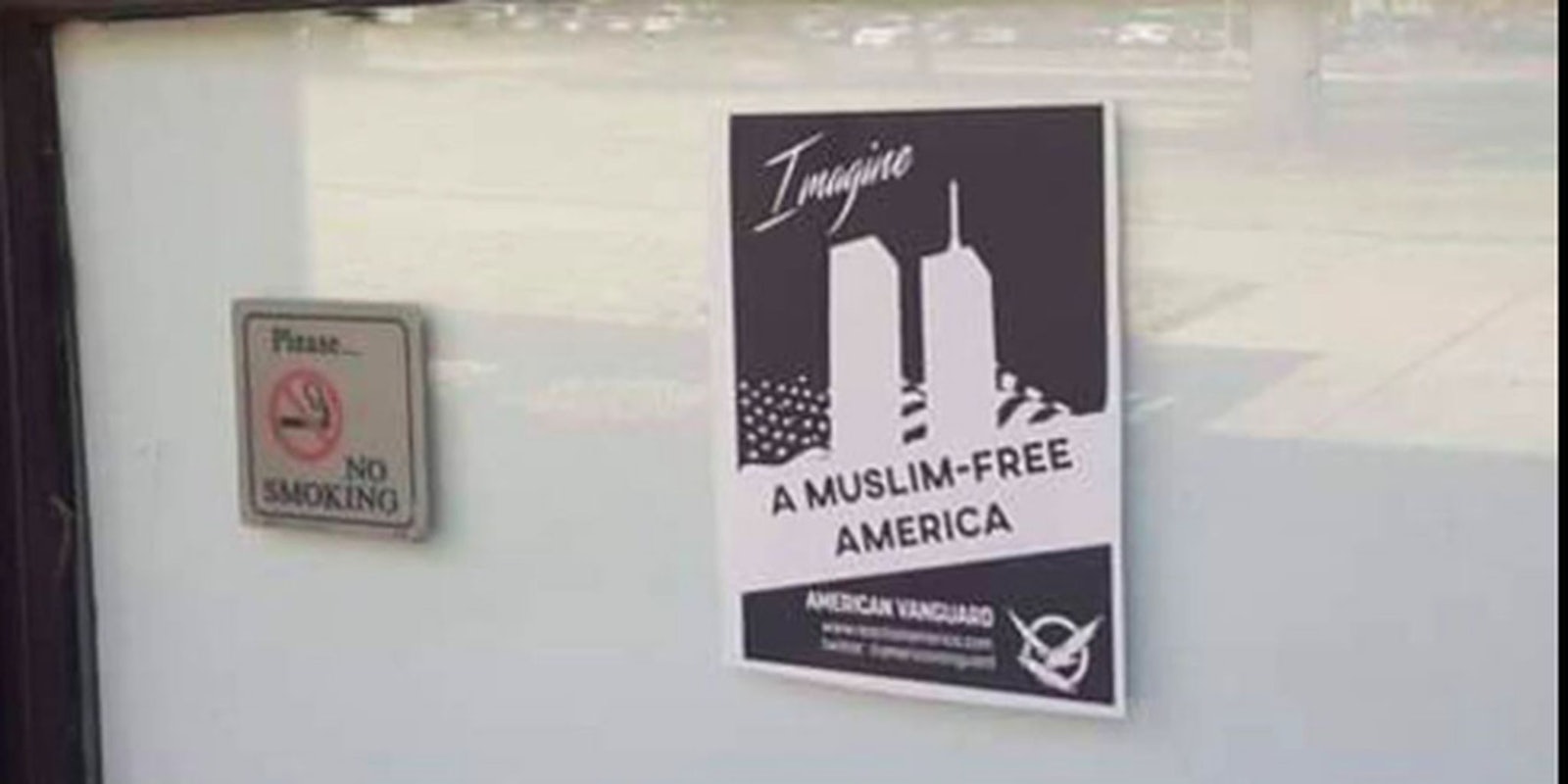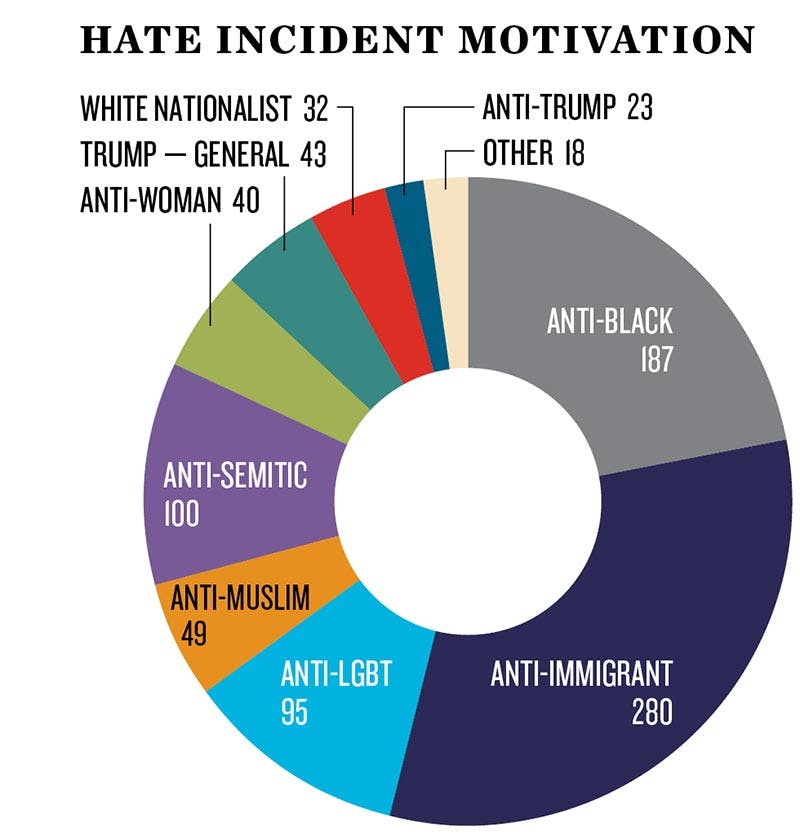As incidents of hate and bigotry targeted at women, immigrants, Latinos, African-Americans, Muslims, LGBTQ people, and other minorities rose drastically in the days after the election, President-elect Donald Trump was confronted by the numbers on 60 Minutes. “I am so saddened to hear that,” he replied to Lesley Stahl’s questioning. “And I say, ‘Stop It.’ If it—if it helps. I will say this, and I will say right to the cameras: ‘Stop It.’”
However, according to the work done by multiple organizations—both journalistic and nonprofit—Trump’s plea hasn’t worked.
On Nov. 29, the Southern Poverty Law Center, an organization best known for monitoring hate groups, published a damning report, claiming 867 incidents of hate and intimidation had taken place in the 10 days since the election. This number doesn’t factor hateful messages on social media; they all took place IRL and were compiled from submissions they received as well as media reports.
Of the 867 occurrences, nearly a third were anti-immigrant. (It’s worth noting that in recent history, “immigrant” has been interchangeable with “Latino.” That’s not the case with the SPLC report, which includes hateful incidents against Asians—the fastest growing immigrant population in the U.S.—under “anti-immigrant.”) That the majority of incidents tallied are against immigrants isn’t particularly surprising given that Trump launched his campaign by claiming that Mexico was sending drug dealers and rapists into the United States.
The SPLC isn’t alone in this endeavor; various news outlets are keeping their own tally of hateful and bigoted incidents. Political news blog ThinkPogress recently rolled out “Mapping Hate,” an interactive map that lets users sort incidents by state or by minority group. So far, ThinkProgress has chronicled 127 different incidents, much less than the SPLC’s figure. The discrepancy is likely due to the former’s methodology, which requires an investigation by their team of researchers or an external source (news article or police report) before an entry is added to the map.
Similar efforts have launched at the local level. The Texas Observer‘s Hatewatch focuses specifically on the Lone Star State—it had the third highest number of incidents reported to the SPLC— and follows up on leads submitted by their readers. Like ThinkProgress, the Texas Observer vets tips before making any updates.
“Most tips we’ve received have not made the list,” Texas Observer editor Forrest Wilder told the Daily Dot. “That doesn’t mean they didn’t occur, just that they either didn’t fit our criteria for inclusion or we were unable to verify to our satisfaction.”
That the majority of occurrences are hard to verify does admittedly imply that people take these projects with a grain of salt. (There are also a number of blogs dedicated to people reporting hate crimes.) Still, Wilder sees a lot of value in enterprises that chronicle these types of episodes.
“It’s important that we not ‘normalize’ such acts of hate and intimidation by treating them as isolated incidents or just another barely remarkable occurrence that amounts to a blip in the news cycle,” he said. “It’s this political and social moment that makes the incidents more resonant because we are able to draw a clear line between most of these acts and the election of Trump and the dark forces he has empowered.”



